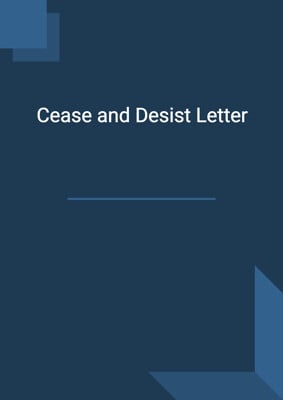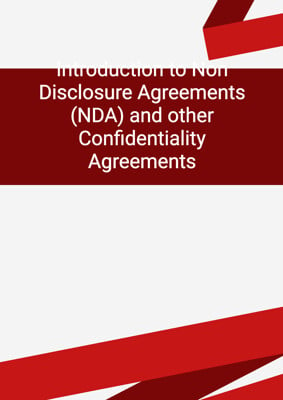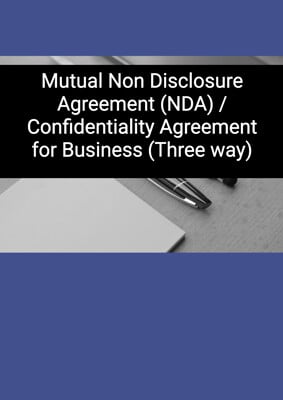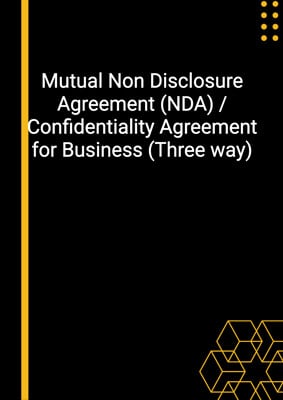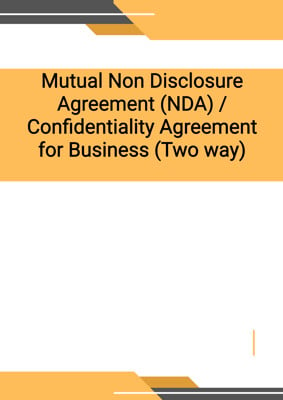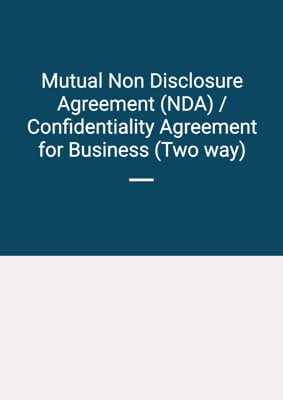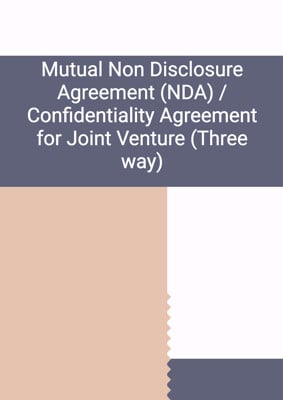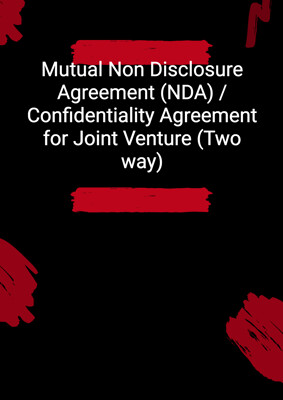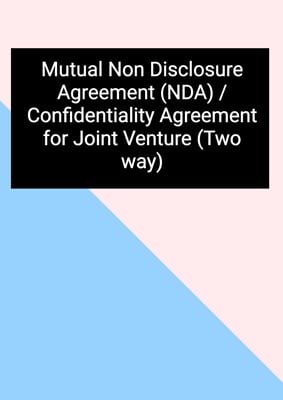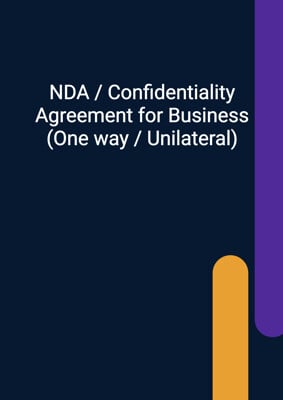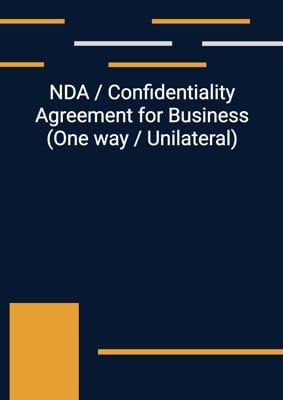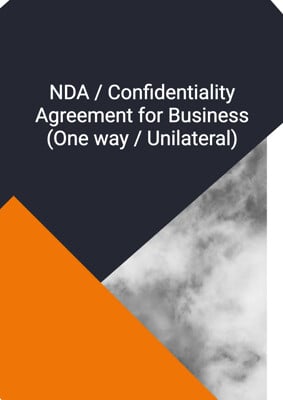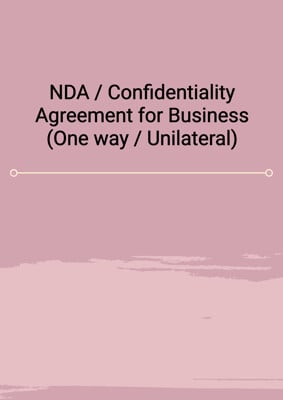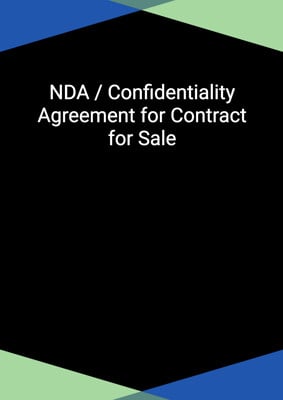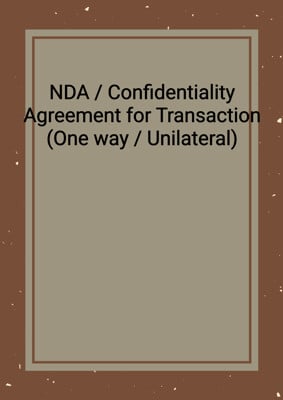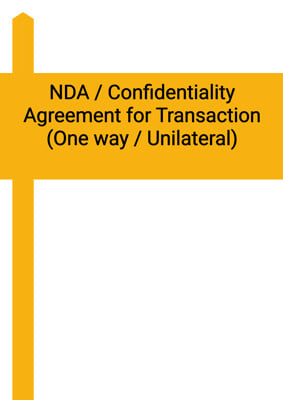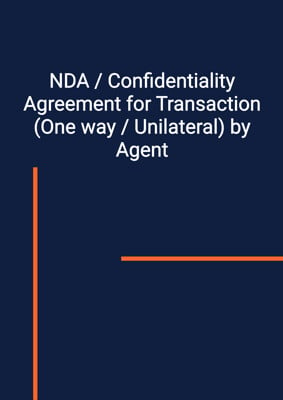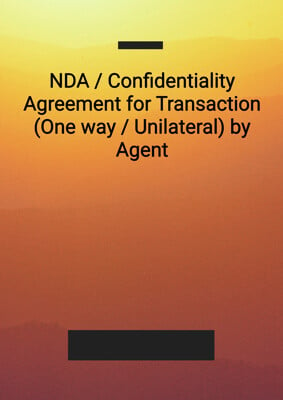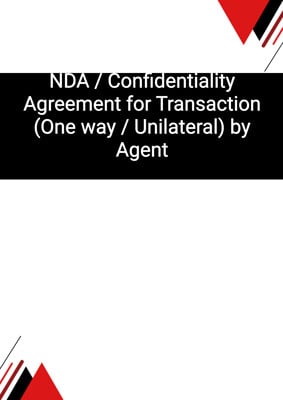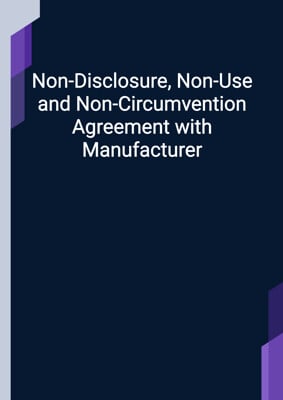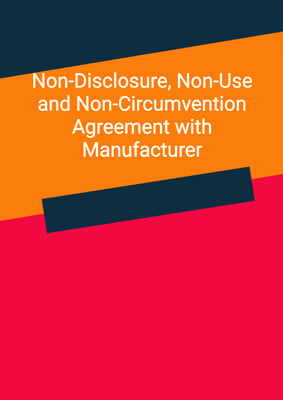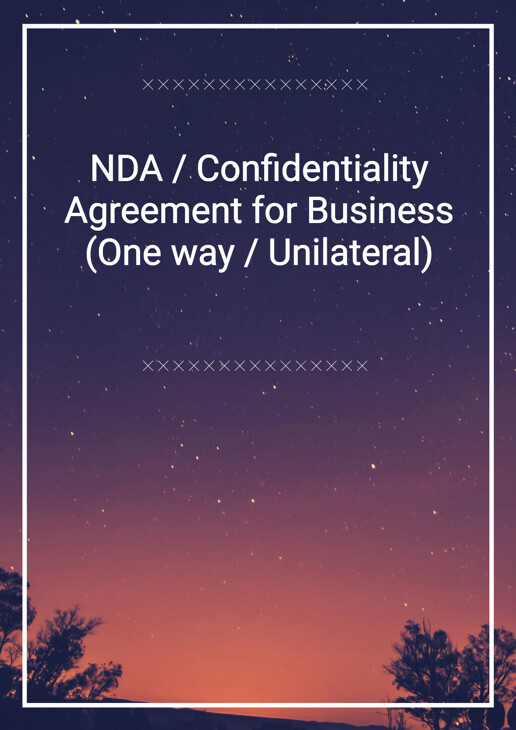
NDA / Confidentiality Agreement for Business (One way / Unilateral)
Neutral - Short / Simple
One way Non Disclosure agreement for discussion of business relationship. It imposes a unilateral obligation of confidentiality on the party who receives the information. This is drafted in short and simple form to procure signing without negotiation. This is drafted in neutral form.
How to Tailor the Document for Your Need?
01
Create Document
Fill in the details of the parties. You can click the "Fill with Member’s Information" button to complete it with information saved to your account.
02
Fill Information
Please fill in any additional information by following the step-by-step guide on the left hand side of the preview document and click the "Next" button.
03
Get Document
When you are done, click the "Get Document" button and you can download the document in Word or PDF format.
04
Review Document
Please get all parties to review the document carefully and make any final modifications to ensure that the details are correct before signing the document.
Document Preview
Document Description
The NDA / Confidentiality Agreement for Business (One way / Unilateral) is a legal document that establishes a confidential relationship between two parties, namely the discloser and the disclosee. The importance of this document lies in its ability to protect sensitive and valuable information from being disclosed to unauthorized individuals or entities.
The entire document is divided into several sections, each serving a specific purpose. The first section provides a brief introduction and background information about the parties involved. It states that the discloser is the owner of certain confidential information and wishes to disclose it to the disclosee for the purpose of evaluating a potential business relationship.
The second section, titled 'Interpretation,' defines key terms used throughout the agreement. It clarifies the meaning of terms such as 'information,' 'purpose,' and 'representatives.' This ensures that both parties have a clear understanding of the terminology used in the document.
The third section outlines the obligations of confidentiality imposed on the disclosee. It states that the disclosee must keep the information provided by the discloser confidential and not use it for any purpose other than the agreed-upon purpose. This section emphasizes the importance of maintaining secrecy and trust between the parties.
The fourth section, titled 'Excepted Information,' specifies certain circumstances in which the obligations of confidentiality do not apply. It states that if the information becomes publicly available, was already known to the disclosee, was disclosed by a third party, or was independently developed by the disclosee, it is not subject to the confidentiality obligations.
The fifth section, titled 'Confidentiality Measures,' outlines the steps the disclosee must take to ensure the information remains confidential. It states that the information should only be disclosed to representatives who need to know it for the purpose. The disclosee must also ensure that its representatives keep the information confidential and obtain their undertaking to do so.
If a specific term is mentioned in the agreement, the sixth section, titled 'Term,' specifies the duration of the confidentiality obligations. It states that the obligations will terminate after a certain number of years or upon the termination of discussions or the execution of related documents.
The final section, titled 'Governing Law and Jurisdiction,' determines the applicable law and jurisdiction for any disputes arising from the agreement. It ensures that both parties are aware of their legal rights and obligations.
In summary, the NDA / Confidentiality Agreement for Business (One way / Unilateral) is a comprehensive document that establishes a confidential relationship between the discloser and the disclosee. It outlines the obligations of confidentiality, exceptions to those obligations, and the necessary measures to maintain confidentiality. It also specifies the duration of the confidentiality obligations and the applicable law and jurisdiction for any disputes.
How to use this document?
1. Enter the relevant information: Fill in the names and addresses of both parties in the agreement, clearly identifying the discloser and the disclosee.
2. Understand the purpose: Recognize that the purpose of the agreement is to allow the disclosee to evaluate the confidential information for the potential establishment of a business relationship with the discloser.
3. Comply with confidentiality obligations: Ensure that the disclosee keeps the information provided by the discloser strictly confidential and does not use it for any purpose other than the agreed-upon purpose.
4. Exceptions to confidentiality obligations: Be aware that certain information may not be subject to the confidentiality obligations, such as information that is publicly available, already known to the disclosee, disclosed by a third party, or independently developed by the disclosee.
5. Take necessary confidentiality measures: Disclose the information only to representatives who need to know it for the purpose. Ensure that these representatives understand the importance of confidentiality and obtain their undertaking to keep the information secret and confidential.
6. Understand the term: If a specific term is mentioned in the agreement, be aware of the duration of the confidentiality obligations, which may be tied to the termination of discussions or the execution of related documents.
7. Know the governing law and jurisdiction: Understand that the agreement is governed by a specific law and jurisdiction, which will apply in case of any disputes.
Note: This guidance provides a general overview of how to use the document. It is important to consult with legal professionals and consider the specific circumstances and requirements of your situation before using the agreement.
